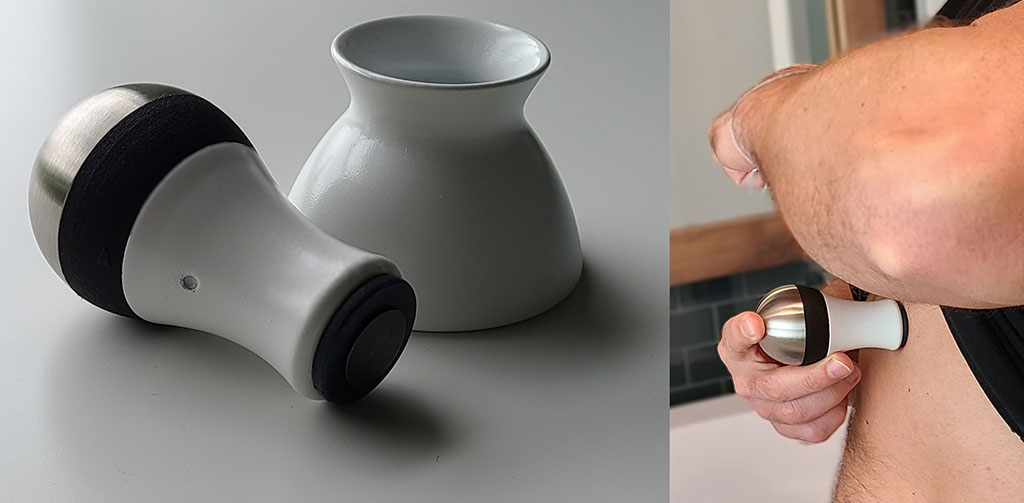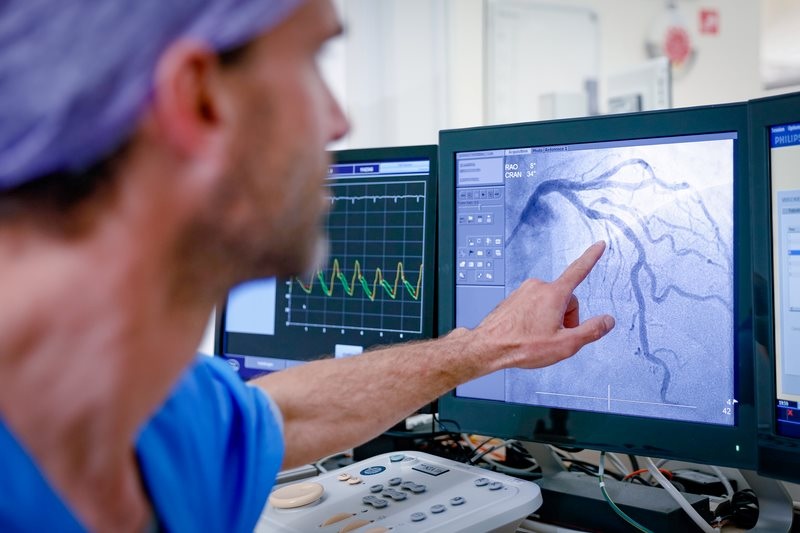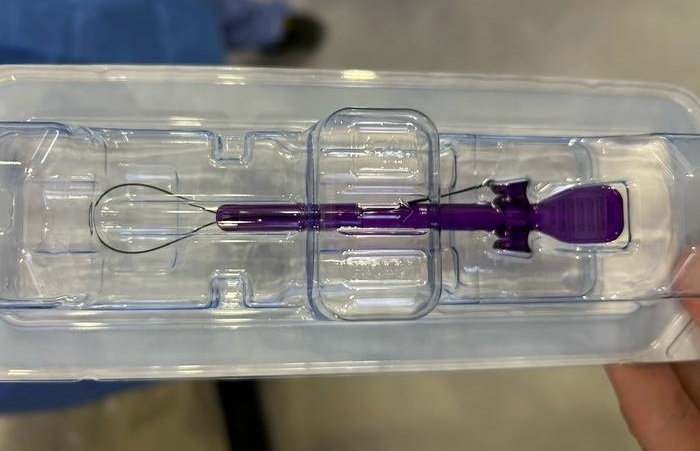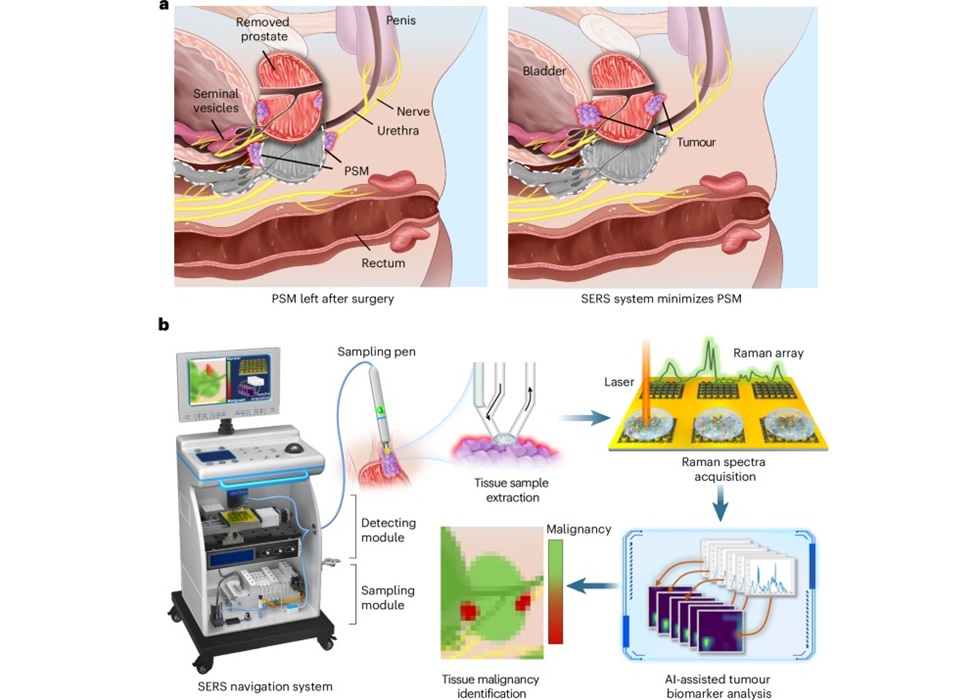Acoustic Monitor Detects Cardiac Decompensation Risk
|
By HospiMedica International staff writers Posted on 10 Mar 2021 |

Image: The AUDICOR acoustic cardiography device (Photo courtesy of Inovise Medical)
A new heart failure management system detects cardiac decompensation remotely in patients who have been previously hospitalized.
The Inovise Medical (Portland, OR, USA) AUDICOR is an acoustic cardiography device designed to non-invasively assess electro-mechanical activation time (EMAT). The acoustic signals are acquired via a hand-held device that connects to a smart phone and uploaded for remote analysis in the cloud. The result is a series of proprietary cardiac acoustic biomarkers that provide actionable data that physicians can use in order to modify patient therapies (such as changing drug dosages) before a significant deterioration that requires further hospitalization can occur.
The device works by simultaneously recording and algorithmically interpreting digital electrocardiogram (ECG) and acoustic data acquired by a multi-axial sound sensor. By measuring systolic time intervals and diastolic sounds, the AUDICOR can provide a reliable assessment of cardiac hemodynamics. Parameters produced include those needed to assess EMAT and systolic function, including Q wave onset to the S1 interval, the presence of a third heart sound (S3), and systolic dysfunction index (SDI), a combination of EMAT, S3, QRS duration, and QR interval.
“The most significant advantages of this new technology are enhanced ease of use, eliminated risks of surgical complications, and significantly reduced costs compared to permanently implanted physiologic sensors currently on the market,” said Peter Bauer, PhD, CEO of Inovise Medical.
“This technology promises to enhance the management of heart failure patients and keep them out of the hospital,” said Professor Michael Mirro, MD, of Indiana University (Bloomington, IN, USA). “Early detection of potential problems outside of the hospital can allow clinicians to modify the patients' therapeutic regimens and maintain their stable condition.”
The third heart sound (S3), also known as ventricular gallop, occurs after the mitral valve opens to allow passive filling of the left ventricle (LV); if the LV is not overly compliant (as is in most adults), the S3 will not be loud enough to be heard. Thus, S3 heart sound is often a sign of systolic heart failure, as it usually indicates the myocardium is overly compliant, resulting in a dilated LV. According to the company, the technology can be extended for use in other diseases, including LV hypertrophy, constrictive pericarditis, sleep apnea, and ventricular fibrillation.
Related Links:
Inovise Medical
The Inovise Medical (Portland, OR, USA) AUDICOR is an acoustic cardiography device designed to non-invasively assess electro-mechanical activation time (EMAT). The acoustic signals are acquired via a hand-held device that connects to a smart phone and uploaded for remote analysis in the cloud. The result is a series of proprietary cardiac acoustic biomarkers that provide actionable data that physicians can use in order to modify patient therapies (such as changing drug dosages) before a significant deterioration that requires further hospitalization can occur.
The device works by simultaneously recording and algorithmically interpreting digital electrocardiogram (ECG) and acoustic data acquired by a multi-axial sound sensor. By measuring systolic time intervals and diastolic sounds, the AUDICOR can provide a reliable assessment of cardiac hemodynamics. Parameters produced include those needed to assess EMAT and systolic function, including Q wave onset to the S1 interval, the presence of a third heart sound (S3), and systolic dysfunction index (SDI), a combination of EMAT, S3, QRS duration, and QR interval.
“The most significant advantages of this new technology are enhanced ease of use, eliminated risks of surgical complications, and significantly reduced costs compared to permanently implanted physiologic sensors currently on the market,” said Peter Bauer, PhD, CEO of Inovise Medical.
“This technology promises to enhance the management of heart failure patients and keep them out of the hospital,” said Professor Michael Mirro, MD, of Indiana University (Bloomington, IN, USA). “Early detection of potential problems outside of the hospital can allow clinicians to modify the patients' therapeutic regimens and maintain their stable condition.”
The third heart sound (S3), also known as ventricular gallop, occurs after the mitral valve opens to allow passive filling of the left ventricle (LV); if the LV is not overly compliant (as is in most adults), the S3 will not be loud enough to be heard. Thus, S3 heart sound is often a sign of systolic heart failure, as it usually indicates the myocardium is overly compliant, resulting in a dilated LV. According to the company, the technology can be extended for use in other diseases, including LV hypertrophy, constrictive pericarditis, sleep apnea, and ventricular fibrillation.
Related Links:
Inovise Medical
Latest Critical Care News
- Magnetically Guided Microrobots to Enable Targeted Drug Delivery

- Smart Nanomaterials Detect and Treat Traumatic Brain Injuries Simultaneously
- Earlier Blood Transfusion Could Reduce Heart Failure and Arrhythmia in Heart Disease Patients
- 'Smart' Shirt Detects Epileptic Seizures in Real Time
- Skin Patch Measures Effectiveness of Flu/COVID Vaccines in 10 Minutes
- Complete Revascularization Reduces Risk of Death from Cardiovascular Causes
- Tiny Fish-Inspired Robots Navigate Through Body to Deliver Targeted Drug Therapy
- Coronary Artery Stenosis Could Protect Patients from Pulmonary Embolism Effects
- Sweat-Powered Sticker Turns Drinking Cup into Health Sensor
- Skin-Mounted 3D Microfluidic Device Analyzes Sweat for Real-Time Health Assessment
- New Therapeutic Brain Implants to Eliminate Need for Surgery
- Stem Cell Patch Gently Heals Damaged Hearts Without Open-Heart Surgery
- Biomaterial Vaccines to Make Implanted Orthopedic Devices Safer
- Deep Learning Model Predicts Sepsis Patients Likely to Benefit from Steroid Treatment
- Programmable Drug-Delivery Patch Promotes Healing and Regrowth After Heart Attack
- Breakthrough Ultrasound Technology Measures Blood Viscosity in Real Time
Channels
Surgical Techniques
view channel
New Study Findings Could Halve Number of Stent Procedures
When a coronary artery becomes acutely blocked during a heart attack, opening it immediately is essential to prevent irreversible damage. However, many patients also have other narrowed vessels that appear... Read more
Breakthrough Surgical Device Redefines Hip Arthroscopy
Hip arthroscopy has surged in popularity, yet surgeons still face major mechanical constraints when navigating deep joint spaces through traditional cannulas. Limited tool mobility and the need for an... Read morePatient Care
view channel
Revolutionary Automatic IV-Line Flushing Device to Enhance Infusion Care
More than 80% of in-hospital patients receive intravenous (IV) therapy. Every dose of IV medicine delivered in a small volume (<250 mL) infusion bag should be followed by subsequent flushing to ensure... Read more
VR Training Tool Combats Contamination of Portable Medical Equipment
Healthcare-associated infections (HAIs) impact one in every 31 patients, cause nearly 100,000 deaths each year, and cost USD 28.4 billion in direct medical expenses. Notably, up to 75% of these infections... Read more
Portable Biosensor Platform to Reduce Hospital-Acquired Infections
Approximately 4 million patients in the European Union acquire healthcare-associated infections (HAIs) or nosocomial infections each year, with around 37,000 deaths directly resulting from these infections,... Read moreFirst-Of-Its-Kind Portable Germicidal Light Technology Disinfects High-Touch Clinical Surfaces in Seconds
Reducing healthcare-acquired infections (HAIs) remains a pressing issue within global healthcare systems. In the United States alone, 1.7 million patients contract HAIs annually, leading to approximately... Read moreHealth IT
view channel
EMR-Based Tool Predicts Graft Failure After Kidney Transplant
Kidney transplantation offers patients with end-stage kidney disease longer survival and better quality of life than dialysis, yet graft failure remains a major challenge. Although a successful transplant... Read more
Printable Molecule-Selective Nanoparticles Enable Mass Production of Wearable Biosensors
The future of medicine is likely to focus on the personalization of healthcare—understanding exactly what an individual requires and delivering the appropriate combination of nutrients, metabolites, and... Read moreBusiness
view channel
Philips and Masimo Partner to Advance Patient Monitoring Measurement Technologies
Royal Philips (Amsterdam, Netherlands) and Masimo (Irvine, California, USA) have renewed their multi-year strategic collaboration, combining Philips’ expertise in patient monitoring with Masimo’s noninvasive... Read more
B. Braun Acquires Digital Microsurgery Company True Digital Surgery
The high-end microsurgery market in neurosurgery, spine, and ENT is undergoing a significant transformation. Traditional analog microscopes are giving way to digital exoscopes, which provide improved visualization,... Read more
CMEF 2025 to Promote Holistic and High-Quality Development of Medical and Health Industry
The 92nd China International Medical Equipment Fair (CMEF 2025) Autumn Exhibition is scheduled to be held from September 26 to 29 at the China Import and Export Fair Complex (Canton Fair Complex) in Guangzhou.... Read more














